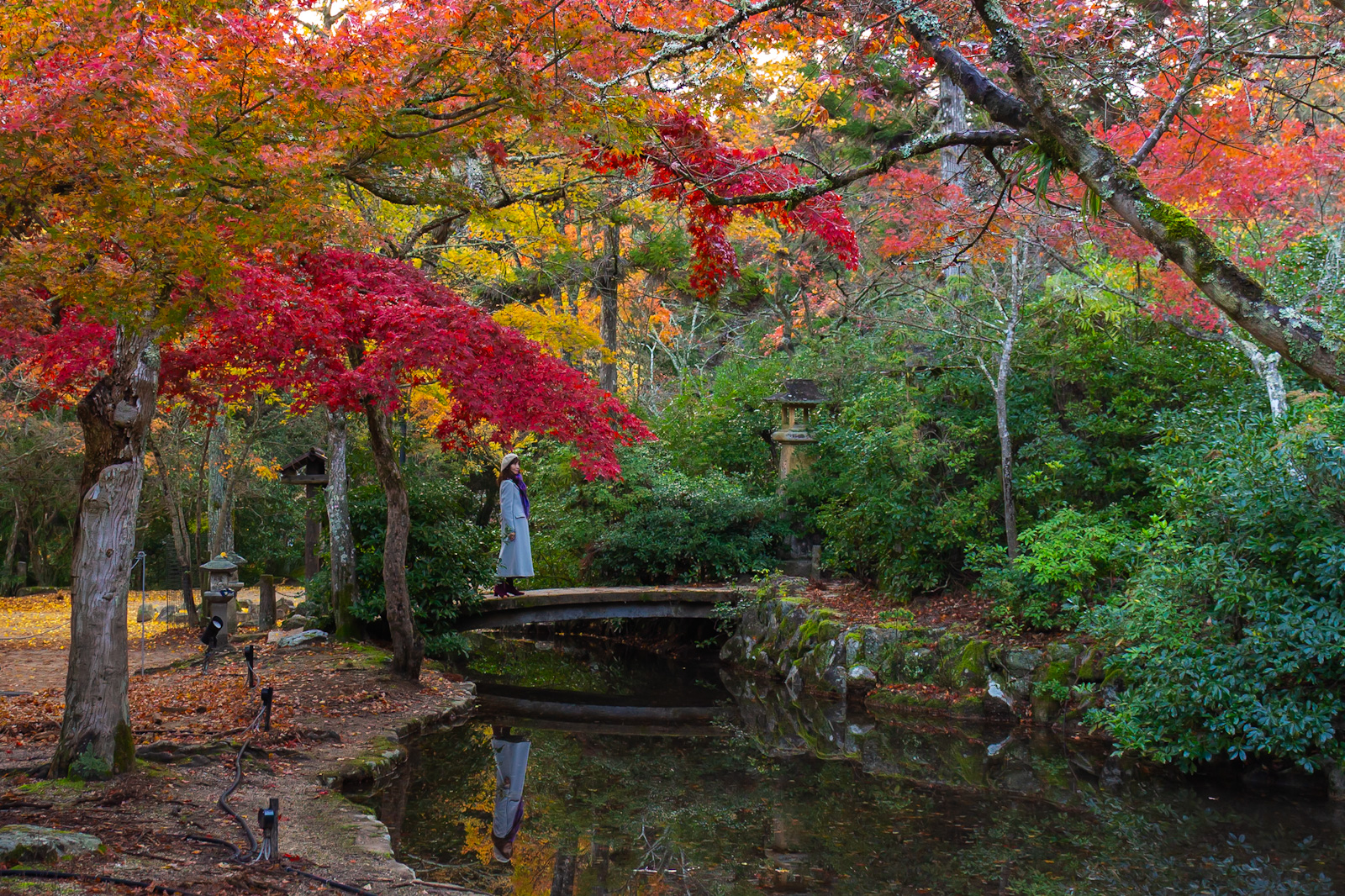For someone who grew up with only two seasons (kak hot and a little chilly, respectively), autumn and spring are still a novelty for me. If I had to choose between them, though, I’d pick autumn every time. Blossoms are beautiful, yes, but there’s just something about entire forests bursting into shades of red, yellow, and orange that is even more magical. And what better place to experience the turn of the leaves than Miyajima?
The island, also known as Itsukushima, is located in Hatsukaichi City, just off the coast of Hiroshima prefecture. It’s home to UNESCO World Heritage Site Itsukushima Shrine and a population of semi-wild sika deer. But if you venture further inland from mid to late November, a beautiful fall wonderland awaits.
Momijidani Park, located at the base of Mt. Misen, is one of Japan’s most famous maple leaf valleys. Designated a National Monument, the park features hundreds of maple trees and evergreens. It’s also the first stretch of a hiking trail that leads up the mountain, although you can also ascend via ropeway.



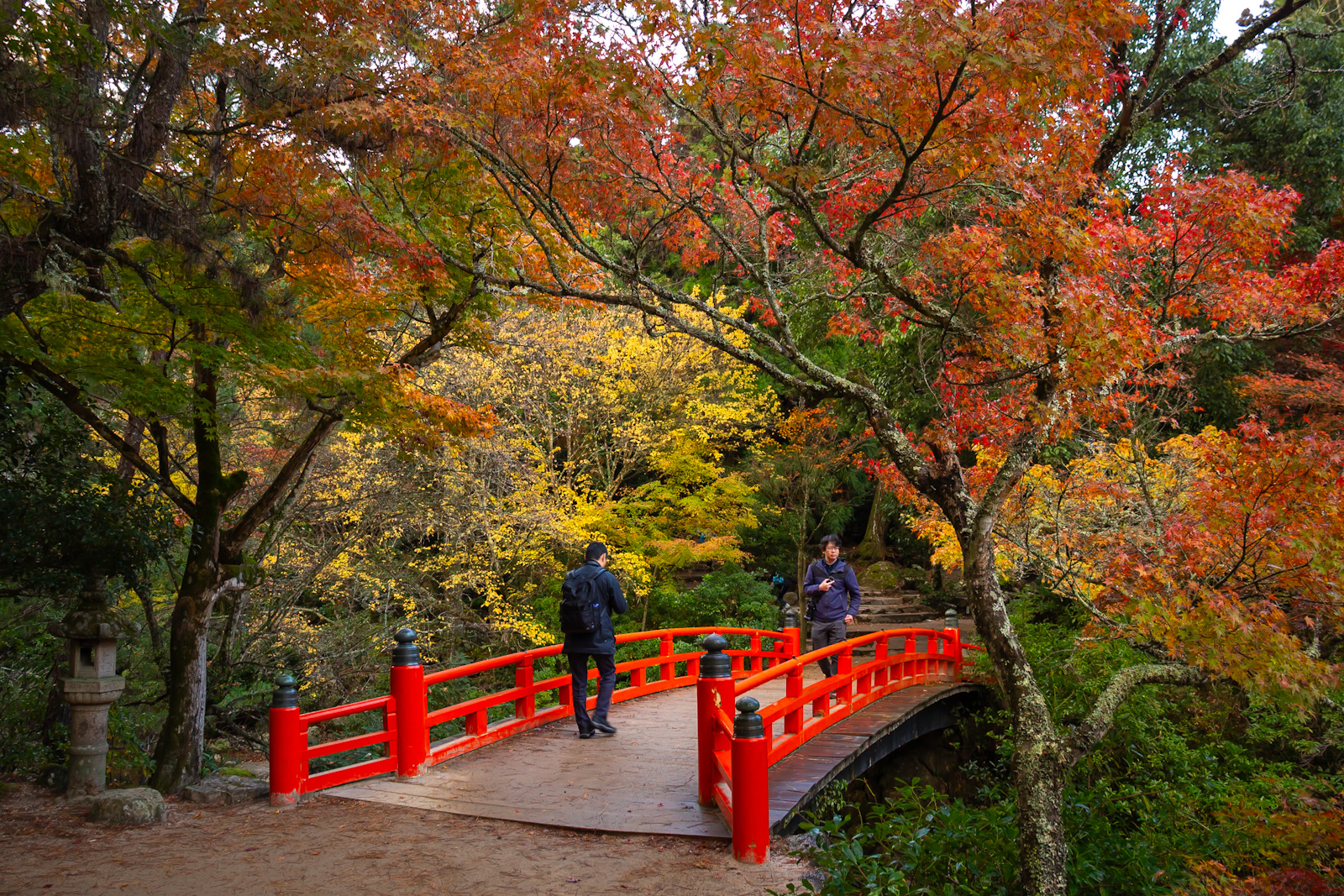

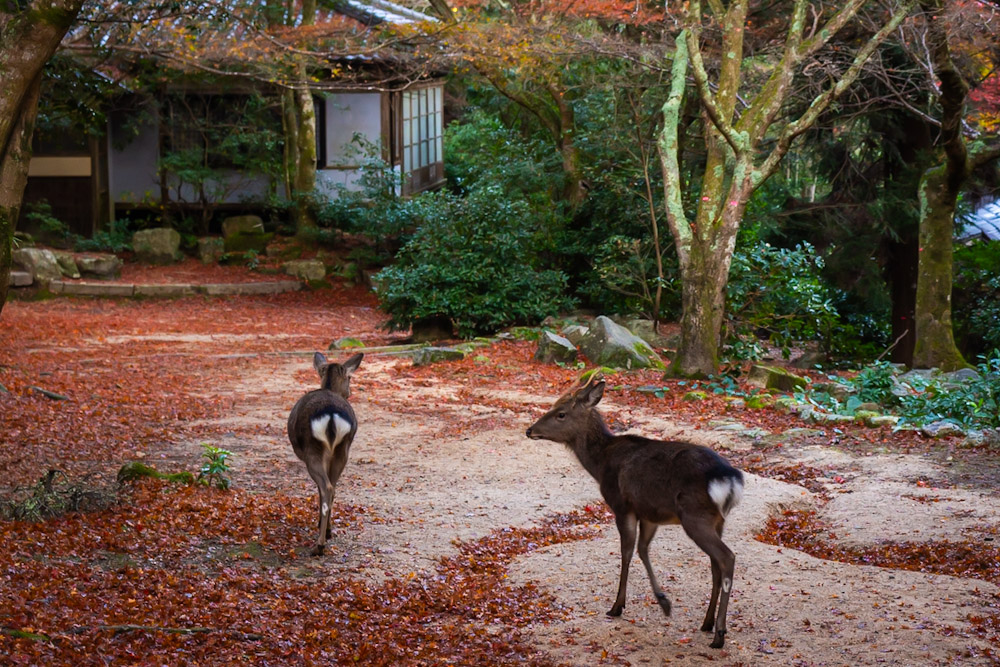
The nearby Daishoin Temple is also a must-see during fall. It’s here that Kobo Daishi first began the practice of Shingon Buddhism on the island. Perched on the mountainside, it overlooks Hiroshima Bay.
The complex features several notable buildings, including the Maniden and Kannon Halls, and a cave where the principal deities of the 88 temples of the Shikoku Pilgrimage are enshrined. Daishoin is also known for its garden of rakan statues, which has 500 figures representing enlightened disciples of Buddha.

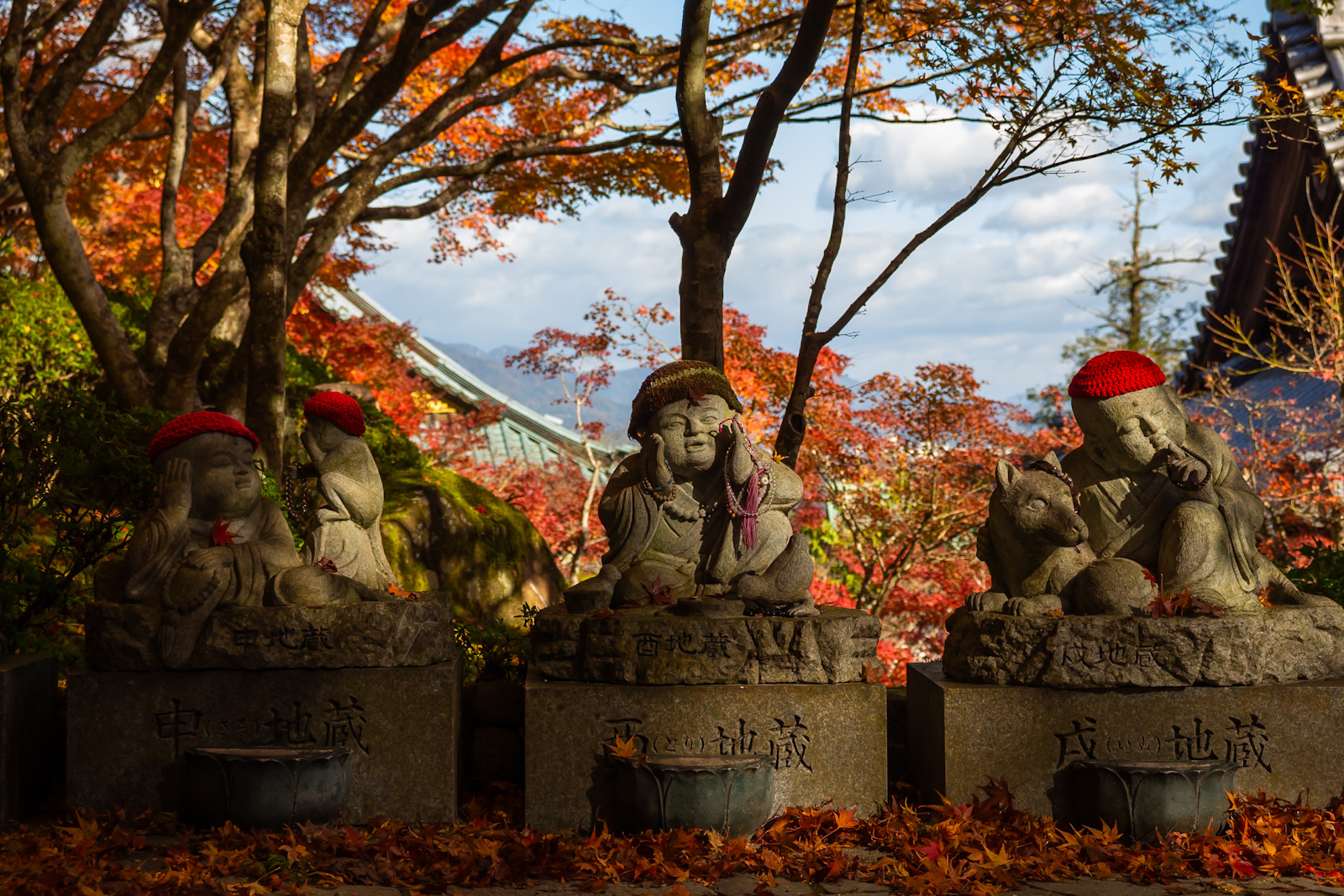
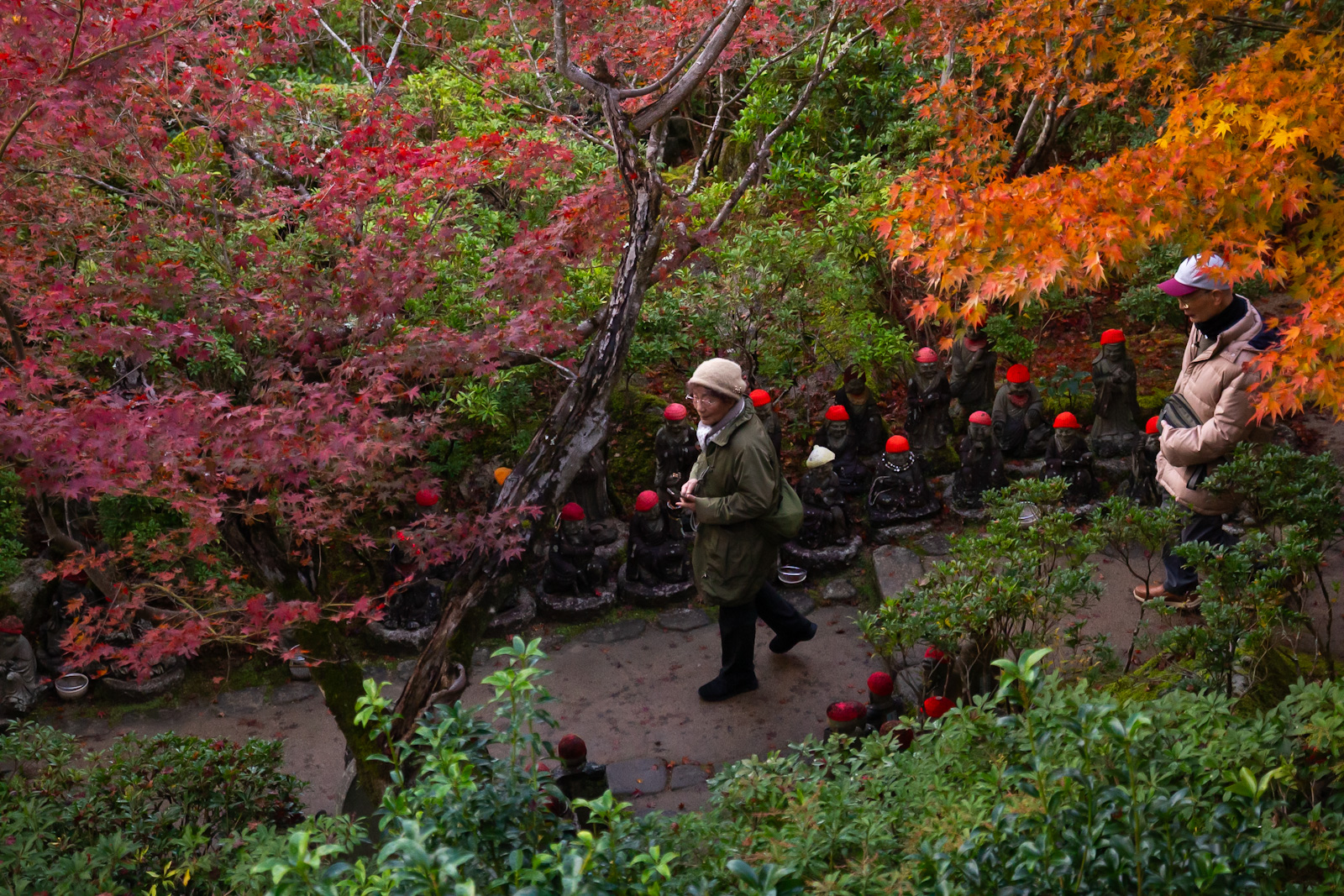
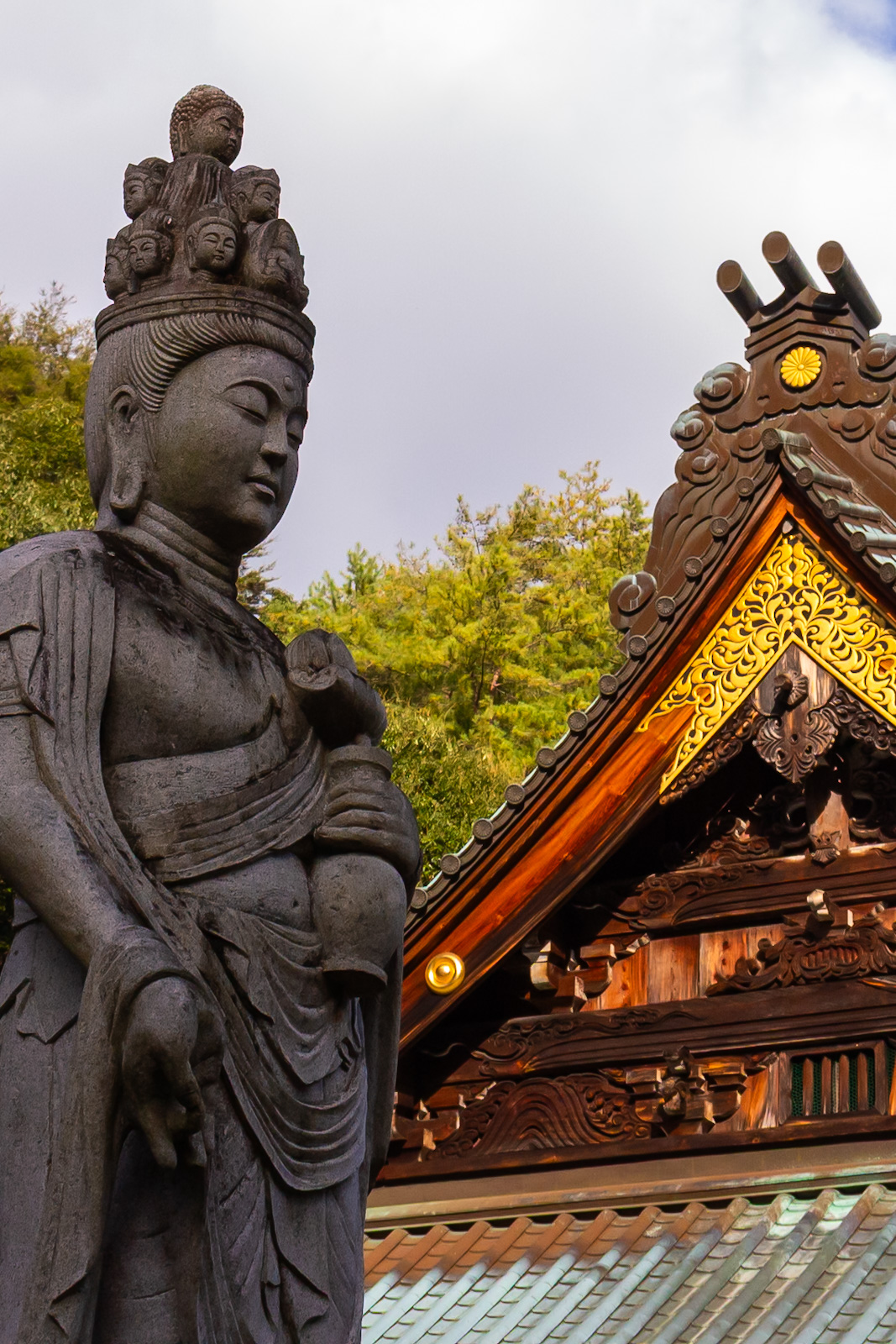
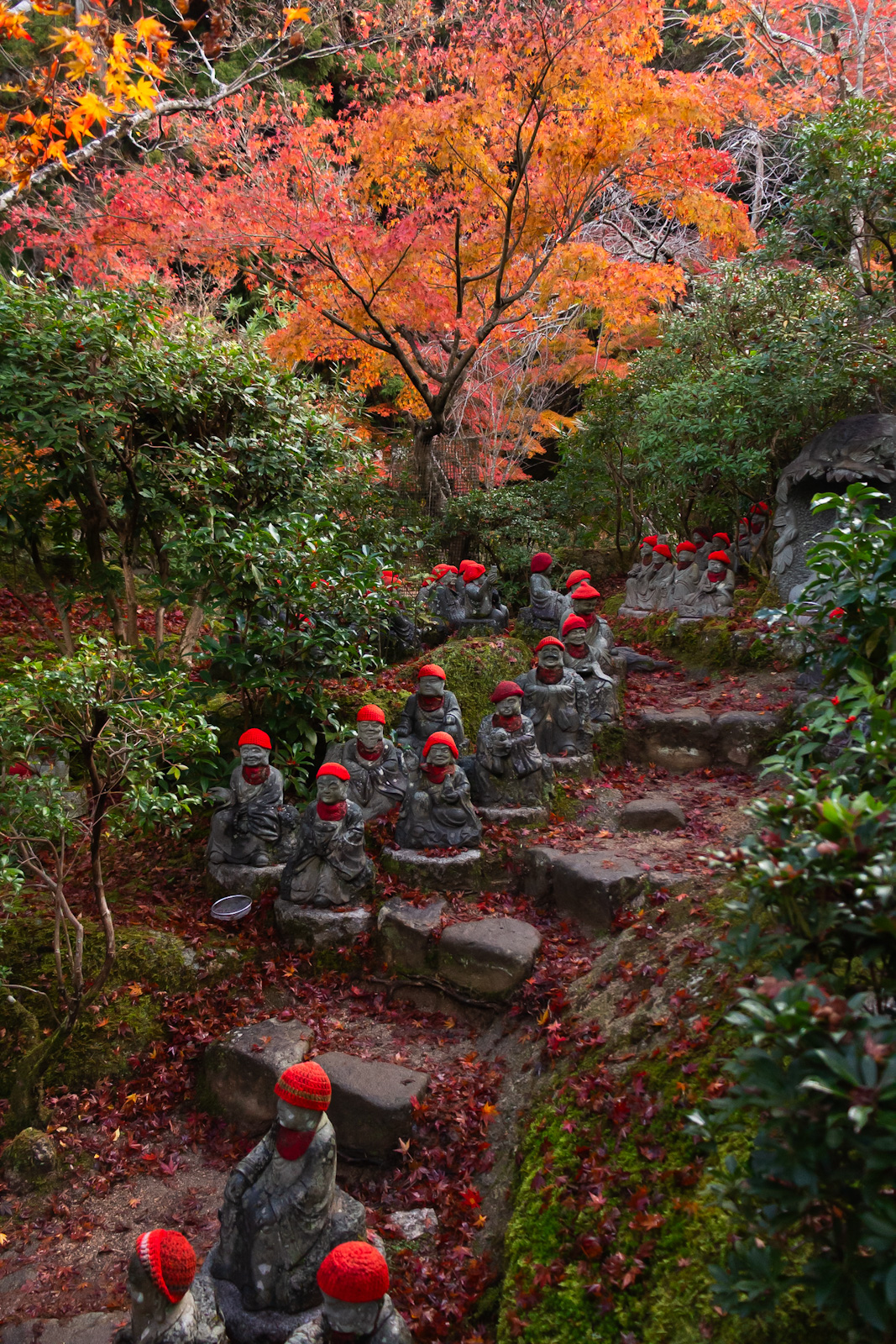
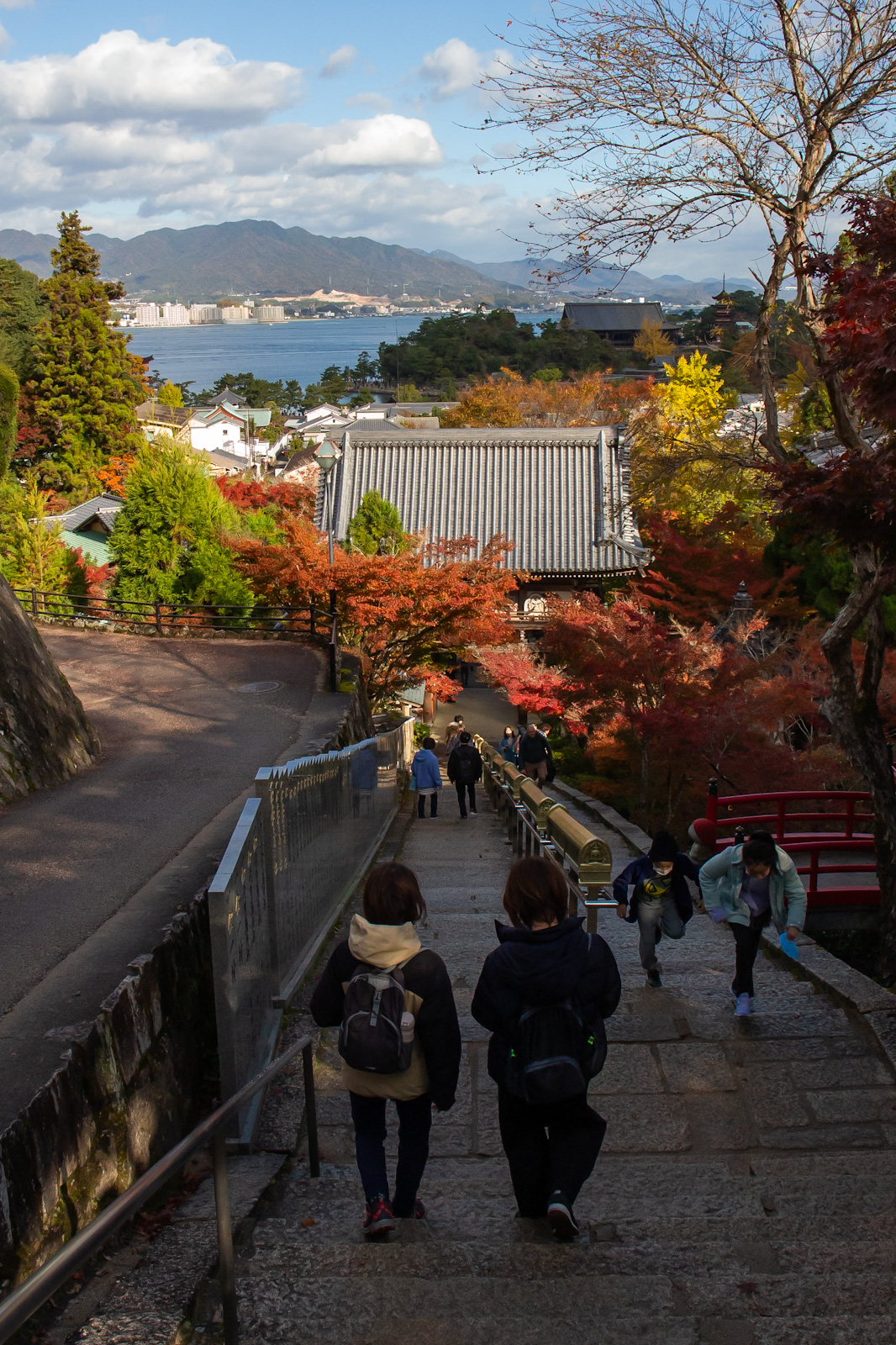
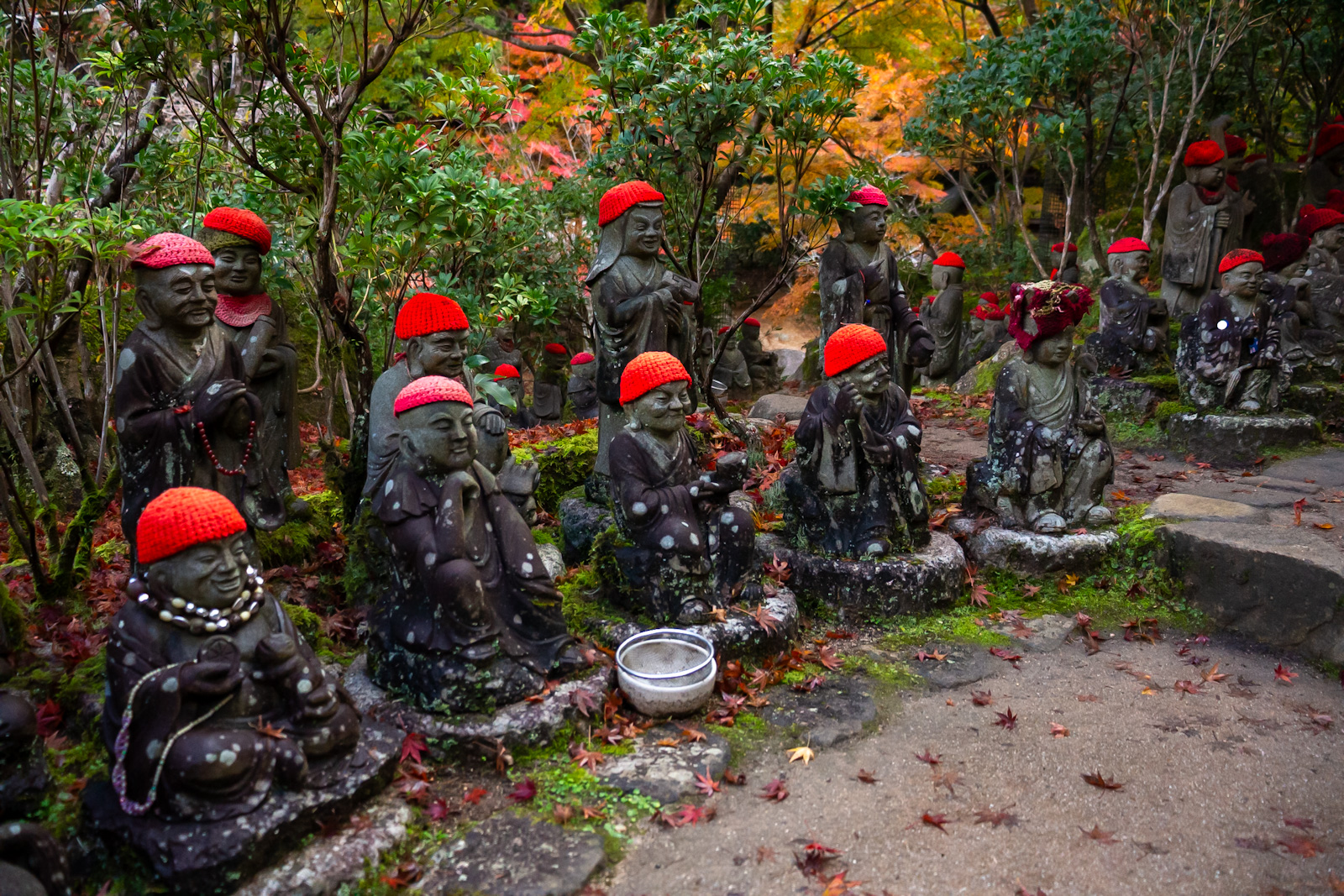
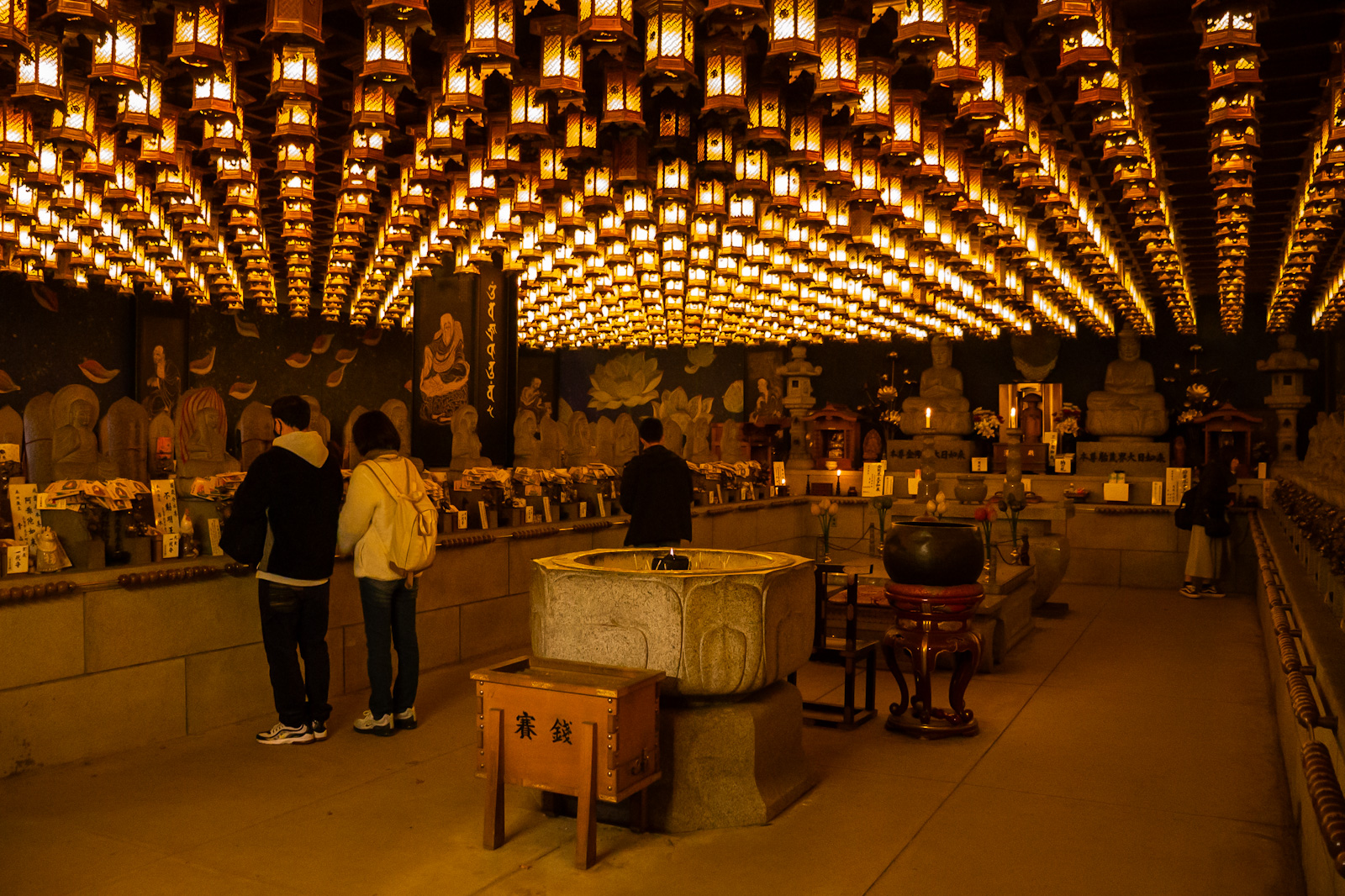
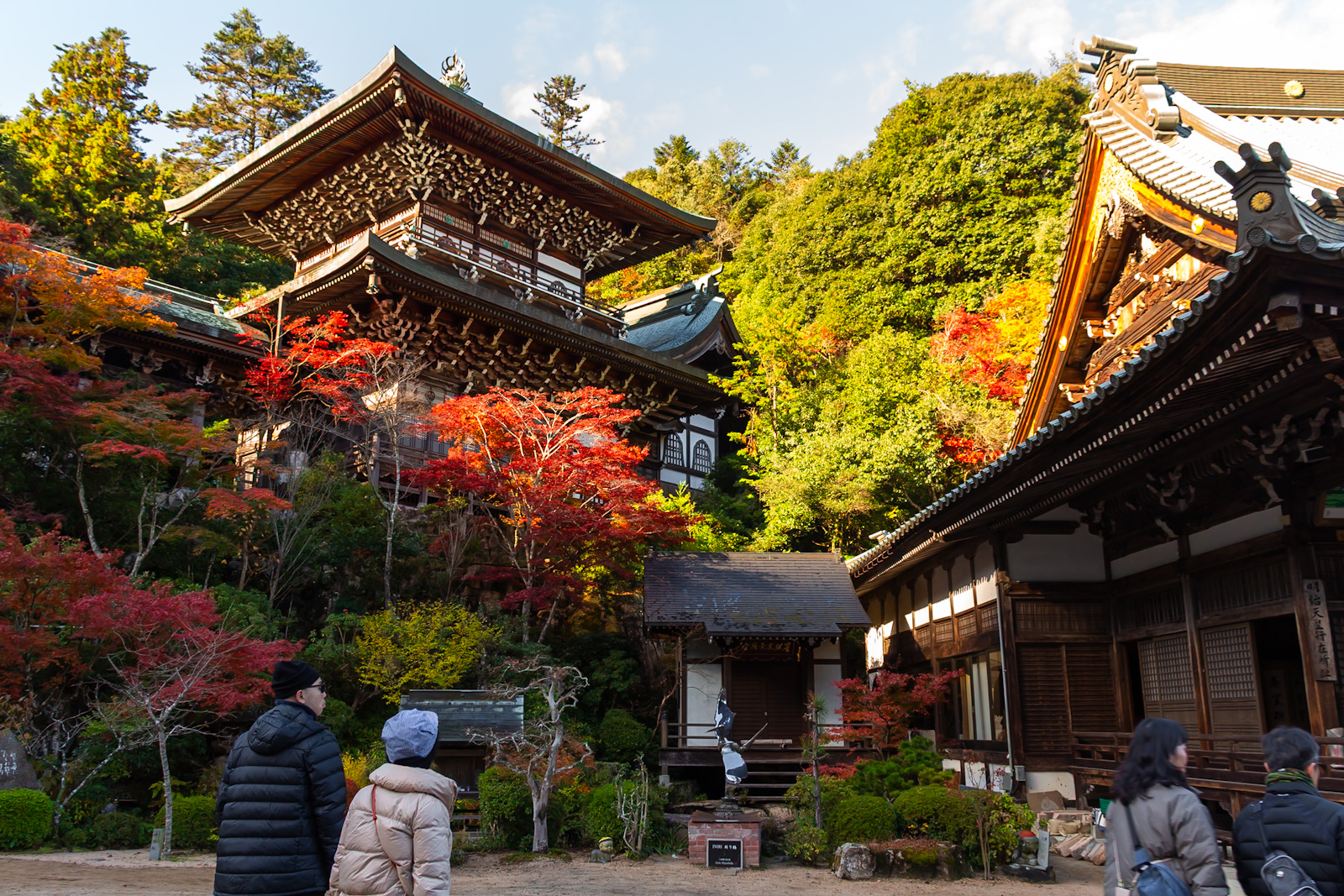
Daishoin Temple and Momijidani Park are about a 15-min walk from Itsukushima Shrine. Both the shrine and its famous torii gate are unique in that they are built over water. At high tide, both appear to float on the surface, and at low tide, you can walk out to the gate and see it up close. At night, the shrine is illuminated, offering visitors another distinct view.
It’s easy to spend an entire day exploring Miyajima. There’s plenty to see and do, but also buy and eat. Omotesando Street is lined with shops and cafes, where you can try the island’s popular momiji manju. These maple leaf-shaped treats are made with a castella-like dough and traditionally filled with red bean paste. There’s plenty of other flavors to try though, including custard, matcha, and chocolate.
Miyajima is also known for its shamoji, or rice paddles, which are said to “scoop up” good fortune. The wooden biwa-shaped utensils can be found in every gift shop and make a great souvenir.




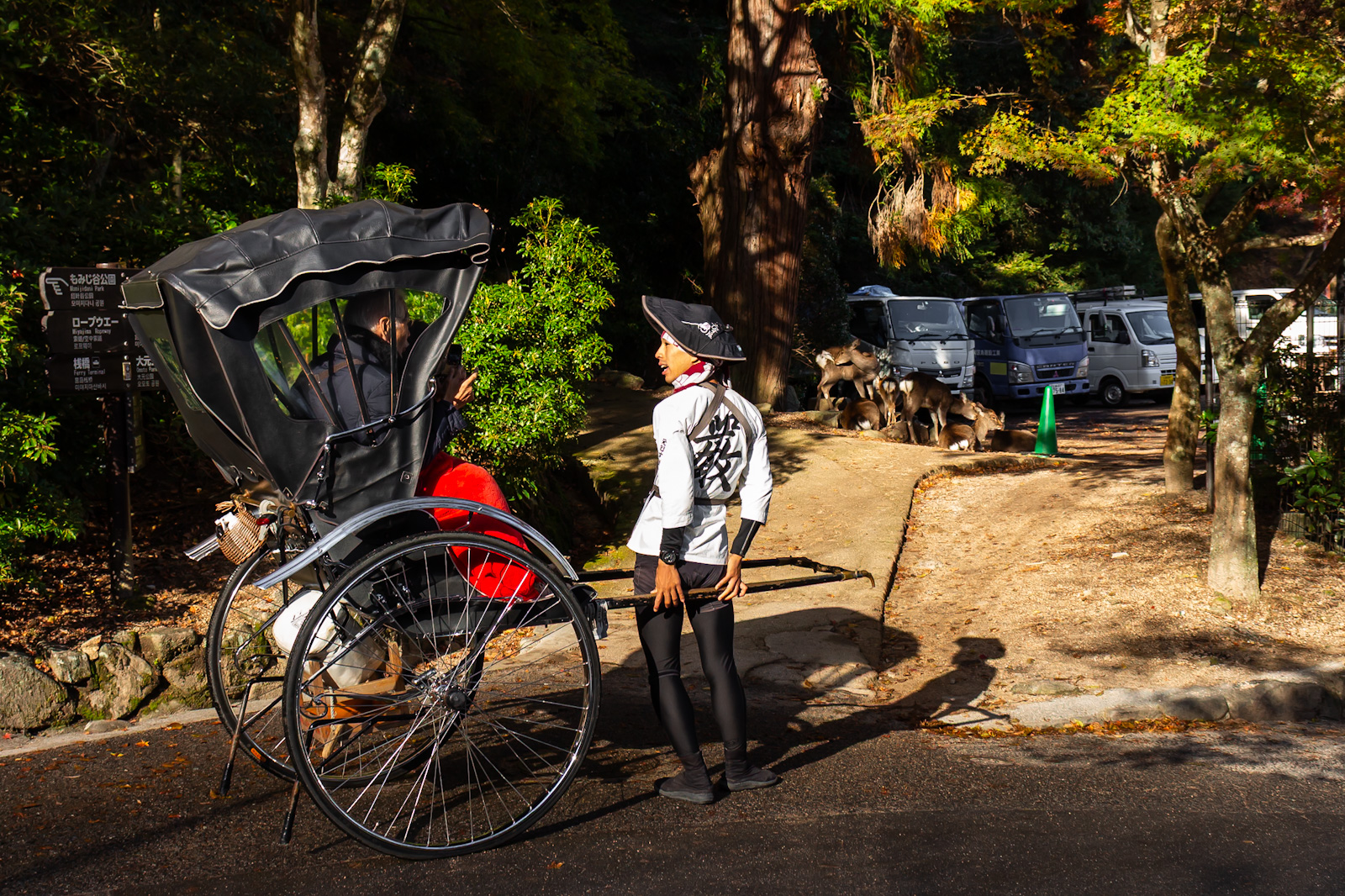

Visit Miyajima
Miyajima is accessible by ferry via Miyajimaguchi Ferry Terminal (宮島口旅客ターミナル) in Hatsukaichi. The Ferry Terminal is a 5-min walk from JR Miyajimaguchi Station. To reach the station from Hiroshima, take the Local Iwakuni on the Sanyo Line from JR Hiroshima Station. It takes about 30 minutes.
From the ferry terminal, you can take either the JR or Matsudai ferry to Miyajima. Be sure to check the websites for respective timetables. Both take 10 minutes and cost 400円 roundtrip (excluding the Miyajima visitor tax of 100円). If you have the Japan Rail Pass, you can use it on the JR ferry.
